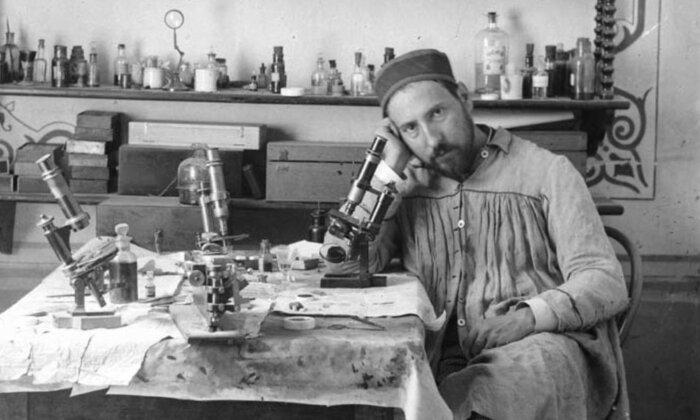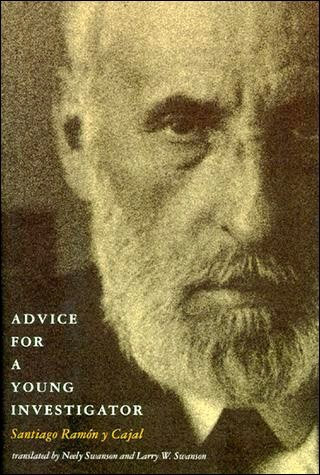The Most Important Scientific Problems Have Yet to Be Solved

Here is a false concept often heard from the lips of the newly graduated: “Everything of major importance in the various areas of science has already been clarified. What difference does it make if I add some minor detail or gather up what is left in some field where more diligent observers have already collected the abundant, ripe grain. Science won’t change its perspective because of my work, and my name will never emerge from obscurity.”

This is often indolence masquerading as modesty. However, it is also expressed by worthy young men reflecting on the first pangs of dismay experienced when undertaking some major project. This superficial concept of science must be eradicated by the young investigator who does not wish to fail, hopelessly overcome by the struggle developing in his mind between the utilitarian suggestions that are part and parcel of his ethical environment (which may soon convert him to an ordinary and financially successful general practitioner), and those nobler impulses of duty and loyalty urging him on to achievement and honor.
Wanting to earn the trust placed in him by his mentors, the inexperienced observer hopes to discover a new lode at the earth’s surface, where easy exploration will build his reputation quickly. Unfortunately, with his first excursions into the literature hardly begun, he is shocked to find that the metal lies deep within the ground — surface deposits have been virtually exhausted by observers fortunate enough to arrive earlier and exercise their simple right of eminent domain.
It is nevertheless true that if we arrived on the scene too late for certain problems, we were also born too early to help solve others. Within a century we shall come, by the natural course of events, to monopolize science, plunder its major assets, and harvest its vast fields of data.
It is a wonderful and fortunate thing for a scientist to be born during one of these great decisive moments in the history of ideas, when much of what has been done in the past is invalidated.
Yet we must recognize that there are times when, on the heels of a chance discovery or the development of an important new technique, magnificent scientific discoveries occur one after another as if by spontaneous generation. This happened during the Renaissance when Descartes, Pascal, Galileo, Bacon, Boyle, Newton, our own Sanchez, and others revealed clearly the errors of the ancients and spread the belief that the Greeks, far from exhausting the field of science, had scarcely taken the first steps in understanding the universe. It is a wonderful and fortunate thing for a scientist to be born during one of these great decisive moments in the history of ideas, when much of what has been done in the past is invalidated. Under these circumstances, it could not be easier to choose a fertile area of investigation.
However, let us not exaggerate the importance of such events. Instead, bear in mind that even in our own time science is often built on the ruins of theories once thought to be indestructible. It is important to realize that if certain areas of science appear to be quite mature, others are in the process of development, and yet others remain to be born. Especially in biology, where immense amounts of work have been carried out during the last century, the most essential problems remain unsolved — the origin of life, the problems of heredity and development, the structure and chemical composition of the cell, and so on.
It is fair to say that, in general, no problems have been exhausted; instead, men have been exhausted by the problems. Soil that appears impoverished to one researcher reveals its fertility to another. Fresh talent approaching the analysis of a problem without prejudice will always see new possibilities — some aspect not considered by those who believe that a subject is fully understood. Our knowledge is so fragmentary that unexpected findings appear in even the most fully explored topics. Who, a few short years ago, would have suspected that light and heat still held scientific secrets in reserve? Nevertheless, we now have argon in the atmosphere, the x-rays of Roentgen, and the radium of the Curies, all of which illustrate the inadequacy of our former methods, and the prematurity of our former syntheses.
It is fair to say that, in general, no problems have been exhausted; instead, men have been exhausted by the problems.
The best application of the following beautiful dictum of Geoffroy Saint-Hilaire is in biology: “The infinite is always before us.” And the same applies to Carnoy’s no less graphic thought: “Science is a perpetual creative process.” Not everyone is destined to venture into the forest and by sheer determination carve out a serviceable road. However, even the most humble among us can take advantage of the path opened by genius and by traveling along it extract one or another secret from the unknown.
If the beginner is willing to accept the role of gathering details that escaped the wise discoverer, he can be assured that those searching for minutiae eventually acquire an analytical sense so discriminating, and powers of observation so keen, that they are able to solve important problems successfully.
So many apparently trivial observations have led investigators with a thorough knowledge of methods to great scientific conquests! Furthermore, we must bear in mind that because science relentlessly differentiates, the minutiae of today often become important principles tomorrow.
It is also essential to remember that our appreciation of what is important and what is minor, what is great and what is small, is based on false wisdom, on a true anthropomorphic error. Superior and inferior do not exist in nature, nor do primary and secondary relationships. The hierarchies that our minds take pleasure in assigning to natural phenomena arise from the fact that instead of considering things individually, and how they are interrelated, we view them strictly from the perspective of their usefulness or the pleasure they give us. In the chain of life all links are equally valuable because all prove equally necessary.
Things that we see from a distance or do not know how to evaluate are considered small. Even assuming the perspective of human egotism, think how many issues of profound importance to humanity lie within the protoplasm of the simplest microbe! Nothing seems more important in bacteriology than a knowledge of infectious bacteria, and nothing more secondary than the inoffensive microbes that grow abundantly in decomposing organic material. Nevertheless, if these humble fungi — whose mission is to return to the general circulation of matter those substances incorporated by the higher plants and animals — were to disappear, humans could not inhabit the planet.
The far-reaching importance of attention to detail in technical methodology is perhaps demonstrated more clearly in biology than in any other sphere. To cite but one example, recall that Koch, the great German bacteriologist, thought of adding a little alkali to a basic aniline dye, and this allowed him to stain and thus discover the tubercle bacillus — revealing the etiology of a disease that had until then remained uncontrolled by the wisdom of the most illustrious pathologists.
Problems that appear small are large problems that are not understood.
Even the most prominent of the great geniuses have demonstrated a lack of intellectual perspective in the appraisal of scientific insights. Today, we can find many seeds of great discoveries that were mentioned as curiosities of little importance in the writings of the ancients, and even in those of the wise men of the Renaissance. Lost in the pages of a confused theological treatise (Christianismi restitutio) are three apparently disdainful lines written by Servetus referring to the pulmonary circulation, which now constitute his major claim to fame. The Aragonese philosopher would be surprised indeed if he were to rise from the dead today. He would find his laborious metaphysical disquisitions totally forgotten, whereas the observation he used simply to argue for the residence of the soul in the blood is widely praised! Or again, it has been inferred from a passage of Seneca’s that the ancients knew the magnifying powers of a crystal sphere filled with water. Who would have suspected that in this phenomenon of magnification, disregarded for centuries, slumbered the embryo of two powerful analytical instruments, the microscope and telescope — and two equally great sciences, biology and astronomy!
In summary, there are no small problems. Problems that appear small are large problems that are not understood. Instead of tiny details unworthy of the intellectual, we have men whose tiny intellects cannot rise to penetrate the infinitesimal. Nature is a harmonious mechanism where all parts, including those appearing to play a secondary role, cooperate in the functional whole. In contemplating this mechanism, shallow men arbitrarily divide its parts into essential and secondary, whereas the insightful thinker is content with classifying them as understood and poorly understood, ignoring for the moment their size and immediately useful properties. No one can predict their importance in the future.
Santiago Ramón y Cajal (1852 – 1934) was a neuroscientist and pathologist, and Spain’s first Nobel laureate. This article is excerpted from his book “Advice for a Young Investigator.”



